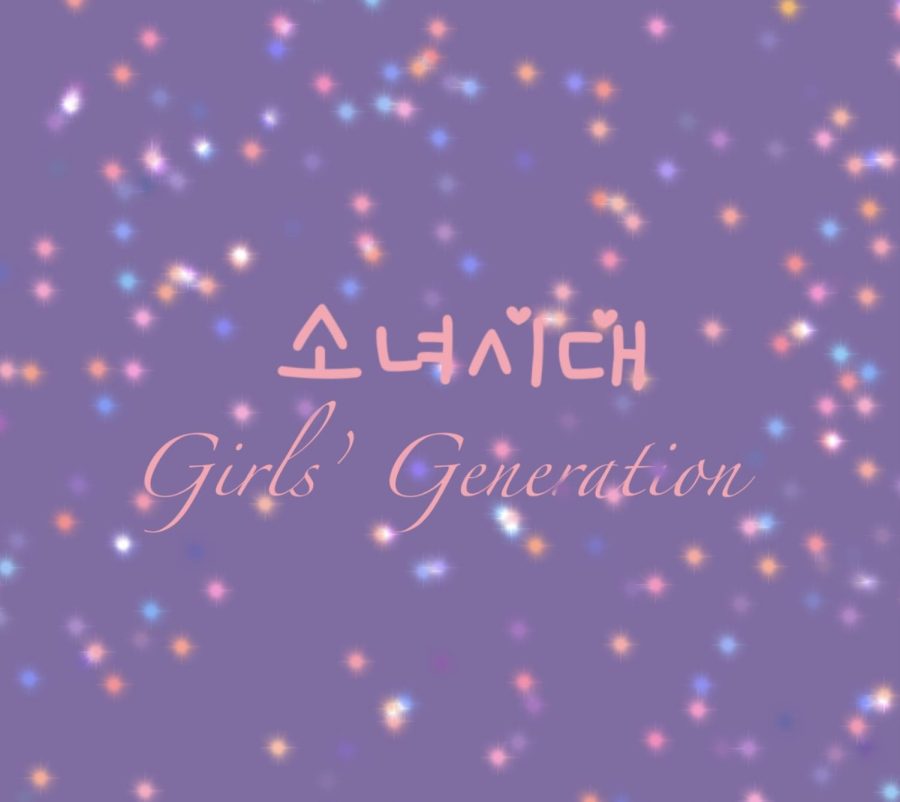Girls’ Generation: The Group that Truly Paved the Way
Witnessing the release of songs such as Girlfriend by Avril Lavigne, Umbrella by Rihanna and Jay-Z, and Gimme More by Britney Spears, 2007 was a notable year in the American music scene.
At the same time, almost 7,000 miles away, one girl group was getting ready to become one of the most notable acts in South Korea.
On August 3, 2007, 소녀시대 (Sonyeo Shidae), also known as Girls’ Generation, debuted as a nine-member group with their single “Into the New World.”
The song debuted at number 5 on the Music Industry Association of Korea’s chart, selling upwards of 10,000 copies in its first month following its release.
Along with thousands of sales, the first month following release brought SNSD their first award, winning Rookie of the Month at the Cyworld Digital Music Awards. Adding the Golden Disc Rookie and Popularity awards to their roster in December, the group became a force to be reckoned with early in their career.
In November of 2007, the group released their first full studio album, the eponymous Girls’ Generation, which featured Into the New World along with ten more tracks.
Despite the group’s immediate success with their debut, they were launched into superstardom with their 2009 single “Gee.”
The single saw wild success, becoming South Korea’s best-selling single of 2009 and was number 1 on Music Bank for nine consecutive weeks, holding the record until the release of Psy’s “Gangnam Style” in 2013.
The hit sold over 100,000 copies in South Korea and secured the group the Daesang at the 2009 Seoul Music Awards, making Girls’ Generation the first female act to receive the award.
In December of 2009, the group embarked on their first tour “Into the New World”, promoting their full album. Their first headlining concert at Seoul Olympic Park sold out in just 3 minutes, and the group performed two encore shows at the venue on February 27th and 28th of 2010.
Around 24,000 people attended their Taiwan performances at the Taipei Arena, setting a record for the most people in attendance for a foreign female act.
The girls immediately moved on from touring to release their second album, simply titled “Oh!”, in January of 2010. Just as they had the year prior for “Gee”, the group was awarded the Daesang for a second time.
“Oh!” was listed as the best-selling release of the year on the Gaon Albums Chart, selling over 234,500 copies domestically and racking up 3.3 million digital downloads. The album was named Album of the Year at the 2010 Golden Disc Awards.
In August of 2010, the girls signed with EMI Japan and debuted with a DVD titled “New Beginning of Girls’ Generation”, releasing a Japanese version of their song Genie (소원을 말해봐/ Tell Me Your Wish) under the group name Shoujo Shudai ( 少女時代) the following month.
The rest of 2010 proved to be an incredibly successful, yet busy year for the girls. Along with both Korean and Japanese releases, the group took part in the SM Town Live 2010 world tour alongside other acts from SM Entertainment, such as BoA, Shinee, and Super Junior.
In 2011 the group released their full Japanese debut album, “Girls’ Generation”. The album immediately topped the Oricon Chart, making Girls’ Generation the first foreign girl group to top the chart on their release date. The album won Album of the Year at the 2012 MTV Video Music Awards Japan.
To promote the album, the group embarked on The First Japan Arena Tour in May of 2011. Due to overwhelming demand, the seven concert tour was extended to a total of fourteen performances. Nearly 160,000 people attended.
On the 19th of October, the group released their third Korean album “The Boys”, which became the best-selling album of 2011 in South Korea.
Girls’ Generation made their US television debut with “The Boys”, performing on The Late Show with David Letterman and Live! With Kelly. Their American debut saw limited success, however, “The Boys” was listed at 17 on Billboard’s Top Heatseekers and sold over 20,000 copies in the United States.
The group focused primarily on Japanese activities in 2012, releasing the single “Paparazzi” and a Japanese version of their single “Oh!”. They released their second Japanese album “Girls & Peace” in November, which is now certified platinum by the RIAJ.
On January 1st of 2013, the group released their 4th Korean album “I Got a Boy”. Naturally, the album charted in South Korea, however, it was also able to secure the #1 spot on Billboard’s World Albums Chart.
Title track “I Got a Boy” was a collaboration between producers Yoo Young-Jin and Will Simms and is a hybrid of genres such as electronic, pop, and dance. The song is often referred to as “The Bohemian Rhapsody of Kpop”.
Billboard listed “I Got a Boy” as the #21 spot on their list of the 100 Greatest Girl Group Songs of All Time and describes the song as a “multi-genre, tempo-shifting Frankenstein’s-monster jam”. The track pioneers the experimental, multi-genre sound that is currently defining 4th generation Kpop with songs such as Aespa’s “Next Level”, Stayc’s “RUN2U” and Nmixx’s “O.O”.
In February of 2014 Girls’ Generation released their EP “Mr.Mr.,” which peaked at number 1 on the Gaon Album Chart. In July of that year, they released their first Japanese best hits album “The Best”. Unknown to fans of the girl group, these would be the last Girls’ Generation promotions to include “Ice Princess” Jessica Jung.
On September 30th, 2014, Jessica announced that she was no longer a member of Girls’ Generation. SM Entertainment confirmed this, pointing to Jessica’s solo schedules as being incompatible with those of the group. There have been claims both that Jessica chose to end her time in SNSD and that SM Entertainment may have forcibly removed her due to the rise in success of her brand Blanc & Eclare, or personal issues between her and other members of the group, particularly group leader Kim Taeyeon.
The group continued promoting with only 8 members, performing in Shenzhen, China the day of Jessica’s departure. The performance was rather uncomfortable as the group simply danced in silence during Jessica’s lines, oftentimes visibly breaking down in tears.
Nearly a year later in August of 2015, the newly 8 member group released their 5th Korean album “Lion Heart” which peaked at number 1 in South Korea and number 11 in Japan. The album sold over 145,000 copies in 2015 and featured three singles “Lion Heart”, “Party”, and “You Think”.
In July of 2017 Girls’ Generation released their album “Holiday Night” to commemorate their tenth debut anniversary. The album debuted at #1 on the Billboard World Albums chart, surpassing “The Boys” as their fastest-selling album.
In October of 2017 SM Entertainment announced that members Choi Sooyoung, Seo Juhyun, and Tiffany Young would not be renewing their contracts, however, they would continue to be members of Girls’ Generation. The group is not disbanded, however, they are currently on indefinite hiatus to focus on the member’s solo activities.
Since the beginning of their group hiatus in 2017, the members have been finding success not only in music but in acting and variety shows as well.
Girls’ Generation’s “Kid Leader” Kim Taeyeon is seeing great success as a solo artist, with seven extended plays and three studio albums. Her most recent album “INVU” was released on February 14th of this year, and debuted at number 2 on the Gaon Album Chart.
On January 3rd of this year, members Taeyeon and Kim Hyoyeon debuted in SM Entertainment’s female supergroup GOT the Beat, alongside soloist BoA, Red Velvet’s Wendy and Kang Seulgi, and Aespa’s Karina and Winter.
Members Seohyun, Sooyoung, Kwon Yuri, and Im Yoona have primarily ventured into acting.
With outstanding vocals and dancing, incredible charisma, and a stacked discography that is both timeless and influential, the powerhouse girl group that is Girls’ Generation has proven again and again that they are truly are a one of a kind “Nation’s Girl Group” that has paved the way for modern Kpop acts and defined the industry.

If you could go to lunch with anyone in history, who would you choose and why?
Maybe it's cheating, but if I could eat lunch with anybody in history...









![Soulful Light at Karaoke Night [Photo Gallery]](https://ghschronicle.com/wp-content/uploads/2023/02/IMG_9446-475x317.jpg)
![Choir Concert 12/15 [Photo Gallery]](https://ghschronicle.com/wp-content/uploads/2023/01/Tswanson_choir_12_1530-475x317.jpg)
![A Night with Jazz Band [Photo Gallery]](https://ghschronicle.com/wp-content/uploads/2022/12/Jain-11_29-Jazz-Band-Concert18-1-475x317.jpg)

